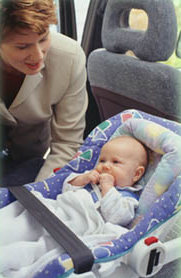Airbags Topic From - Comedy Safe Driver Defensive Class
Why Choose Airbag Defensive Class?
Airbags are an essential safety feature in modern vehicles. They help protect drivers and passengers during accidents, reducing the risk of injury or even death. However, airbags alone are not enough to ensure safety on the road. That's where the Airbag Defensive Class comes in.
Our unique and engaging Comedy Safe Driver course is designed to provide you with valuable defensive driving techniques, focusing on airbag safety and proper use. With a mix of humor and expert instruction, this course is perfect for drivers of all ages who want to learn while having fun.
Airbags and Children: What You Need to Know
Airbags are an essential safety feature in modern vehicles, designed to protect adult passengers during a crash. However, they can pose risks to children if not managed properly. The Airbag Defensive Class aims to educate you on how to ensure the safety of your little ones while on the road. In this section, we will cover important topics, including:
-
The correct seating position for children: Children should always ride in the back seat, as this is the safest place for them in a vehicle. The American Academy of Pediatrics (AAP) recommends that children younger than 13 years of age should ride in the back seat. The center rear seat is considered the safest location, as it is farthest from potential impact points during a crash.
-
Proper use of child safety seats and booster seats: Using the appropriate child safety seat or booster seat can significantly reduce the risk of injury during a crash. Ensure that you are using the correct seat for your child's age, weight, and height and that it is properly installed according to the manufacturer's instructions. There are four main types of child safety seats:
a. Rear-facing car seats: For infants and toddlers, usually up to 2 years old or until they reach the maximum weight and height limits set by the car seat manufacturer. b. Forward-facing car seats: For toddlers and preschoolers who have outgrown their rear-facing seats, typically between 2 and 5 years old or until they reach the maximum weight and height limits set by the car seat manufacturer. c. Booster seats: For children who have outgrown their forward-facing car seats, usually between 5 and 12 years old or until they reach a height of 4 feet 9 inches. d. Seat belts: Once a child is tall enough to use a seat belt properly without a booster seat, they can transition to using a seat belt.
-
When to deactivate your vehicle's airbags: In some cases, it may be necessary to deactivate your vehicle's airbags to ensure your child's safety. This is particularly important if your child must ride in the front seat due to a lack of rear seating or other special circumstances. Always consult your vehicle's owner's manual for specific instructions on how to deactivate the airbags.
-
Understanding the risks associated with airbags and children: Airbags can be dangerous for children because they are designed to protect adults during a crash, and their deployment force can cause serious injuries to smaller, lighter passengers. Children are at a higher risk of injury from airbags due to their smaller size and the fact that they are more likely to be improperly positioned in the front seat. By following the guidelines provided in this class and using the appropriate child safety seats and positioning, you can significantly reduce the risks associated with airbags and keep your children safe while on the road.
In addition to the topics covered above, it's essential to be aware of and follow other safety practices when traveling with children. These include:
-
Ensuring children are properly buckled up: Regardless of the type of child safety seat or booster seat being used, always make sure your child is securely buckled up before starting your journey. Double-check that the seat belts, harnesses, and buckles are correctly fastened and adjusted according to the manufacturer's instructions.
-
Avoiding distractions while driving: Distracted driving can lead to accidents and jeopardize the safety of all passengers, including children. Avoid using mobile devices, eating, or engaging in other activities that may divert your attention from the road. If you need to attend to your child, pull over to a safe location before doing so.
-
Educating children about vehicle safety: Teach your children the importance of vehicle safety and proper behavior while riding in a car. Encourage them to stay seated and buckled up at all times, avoid playing with windows and door locks, and not distract the driver.
-
Regularly inspecting and maintaining child safety seats: Regularly inspect your child's car seat for wear, damage, or other issues that may compromise its safety. Ensure it is still appropriate for your child's age, weight, and height, and check for any recalls or safety notices related to the seat. Replace the car seat if it has been involved in a moderate to severe crash, as its structural integrity may be compromised.
-
Being prepared for emergencies: Keep a well-stocked emergency kit in your vehicle, including items such as a first-aid kit, flashlight, blankets, non-perishable food, and water. Familiarize yourself with basic first-aid procedures and know how to respond in case of an accident or other emergency situations.
By following these guidelines and the information provided in the Airbag Defensive Class, you can ensure the safety of your little ones while on the road. Remember, it's crucial to stay informed about the latest safety recommendations and best practices to keep your children protected during your travels.
-
Maximize Your Airbag's Effectiveness
In our Airbag Defensive Class, our aim is to empower you with the knowledge and skills to make the most of your vehicle's airbag system, so you can drive more safely and confidently. We'll be covering a range of topics that will help you understand how airbags work, how to ensure they are functioning correctly, and how to avoid potential injuries in case of an accident. Here's an overview of what we'll be covering:
-
Maintaining a safe distance from the steering wheel: To minimize the risk of injury from airbag deployment, it's essential to maintain a safe distance from the steering wheel. We'll discuss the recommended distance, which is generally 10 inches, and provide tips on how to measure and maintain that distance while driving. This will help you avoid injuries caused by the force of the airbag as it deploys.
-
Properly adjusting your seat and head restraint: Proper seat and head restraint adjustments are critical to ensure that airbags provide maximum protection in case of a collision. We'll teach you how to correctly position your seat to maintain the ideal posture and distance from the airbag. We'll also discuss the importance of adjusting your head restraint to minimize the risk of whiplash and other neck injuries.
-
Understanding how airbags deploy and how to avoid injury: We'll provide an in-depth understanding of how airbags work, from their sensors and triggers to the deployment process itself. By understanding the mechanics behind airbag deployment, you'll be better prepared to react in the event of a collision. We'll also discuss common misconceptions about airbags and offer practical tips to avoid potential injuries, such as keeping your hands in the recommended 9 and 3 or 8 and 4 o'clock positions on the steering wheel.
-
Recognizing and addressing airbag warning signs: Airbag warning signs should never be ignored, as they can indicate a malfunction in the system. In this section, we'll discuss the various types of airbag warning signs, including dashboard indicator lights and unusual noises. We'll also teach you how to respond to these warning signs, including when to seek professional help, so you can ensure that your airbags are functioning properly at all times.
By the end of our Airbag Defensive Class, you'll have a comprehensive understanding of how airbags work and how to use them effectively to stay safe on the road. This knowledge can significantly reduce the risk of injury in the event of a collision, giving you greater peace of mind while driving.
Why Comedy Safe Driver?
At Comedy Safe Driver, we believe that learning should be fun and engaging. Our Airbag Defensive Class combines expert instruction with humor, making it easy for you to absorb the information and apply it in your everyday driving. When you choose Comedy Safe Driver, you can expect:
- A fun and entertaining learning experience
- Flexible scheduling
- Convenient online access from anywhere
- Expert instructors with years of experience
- High-quality course content tailored to your needs
- A supportive and enjoyable learning environment
Sign Up for the Airbag Defensive Class Today!
Don't wait any longer to improve your driving skills and learn how to protect yourself, your passengers, and especially your children. Sign up for the Airbag Defensive Class today and experience the difference that Comedy Safe Driver can make in your life!
















